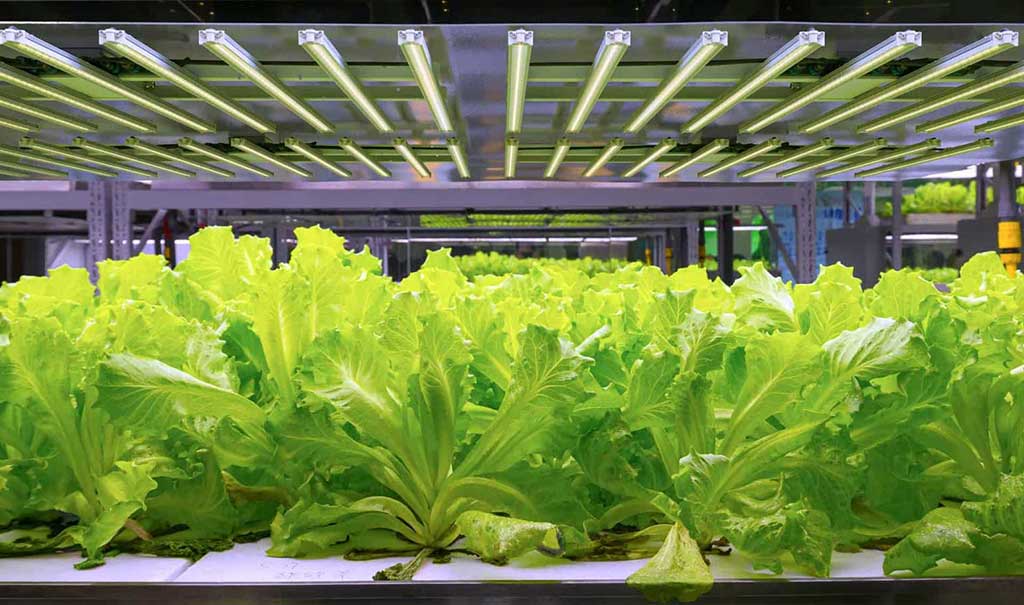Indoor growers have been using light to grow plants for decades. But like everything, technology is moving rapidly and full spectrum LED grow lights are gaining ground in the industry.
Full spectrum LED grow lights have research on their side: Recent studies show that cannabis plants in particular like green light – which is found more in LED lights than other types of lights. And, green light penetrates the leaves, so the lower leaves and stalk will absorb more light, which in competitive and growing industries like cannabis, where every dollar counts, helps produce larger colas below the canopy. Some growers are using full spectrum LED grow lights as the sole light source; others are using them to supplement growth – like in greenhouses.

And LED grow lights can be used to manipulate and scale plant production and growth, by revving up or slowing down growth at key times in the plant’s growth cycle.
So, what are some factors every grower should know about full spectrum LED grow lights?
Grow Light Spectrum
First, we need to talk about the grow light spectrum. This is basically the wavelengths produced by a light source, like the sun or LED lights. Being a spectrum, there is a range of wavelengths and growers are most interested in the ranges that affect plant growth – which are the wavelengths including UV radiation, the visible part of the spectrum (including photosynthetic active radiation or PAR) and far red radiation.

Plants use the light in the PAR part of the spectrum for photosynthesis, which for growers, is fairly easy to discern.
In plants, chlorophyll – which converts the energy in the light to chemical energy – absorbs mostly red and blue light during photosynthesis. Red and blue light are also found in the PAR range of the spectrum.

Plants have about 5 billion years of DNA from the sun stored in them – we can’t be so naïve to think we know everything at this point in time. And full spectrum LED lights best mimic the light of the sun.
Daily Light Intervals
Daily light intervals are a fancy way of saying when is the light on and when is the light off – or when are your plants “sleeping” and when are they “awake.”
How much light your plants need changes as they grow and mature. Younger plants need more light for longer periods of time and more mature plants can get by with less light – but they need more intense light.
This is where full spectrum LED lights are going to be of benefit. Full spectrum LED lights more closely mimic the sun, in that they – as their name suggests – include all the colors of the spectrum.
If you are growing cannabis, young cannabis plants require more blue light and flowering cannabis plants need more red light. This is where a full spectrum light can benefit growers, as they use artificial light to help a plant grow more effectively.
Using artificial light
Growers make use of artificial light to help plants grow bigger and better. This is when a full spectrum LED lights are going to come into play, so man can help nature along by emphasizing what a plant needs at a precise time to influence a better outcome. This is why you probably don’t want to have plants at different stages under the same lights, because they don’t need the same intensity at the same time.
LED vs. HID
Growers have been using high intensity discharge (or HID) lights for decades. They are bright and have gotten the job done. HID lights come in two forms: Metal halide or High Pressure Sodium. You’ve seen them in streetlights and on baseball fields.

LED lights are the new kids on the block, so to speak. And the conversation has been going on about which is better: LED or HID? The fact is, plants can grow well under either but, recent studies indicate that LED has evolved to the extent that their performance is now better under LED light. Especially cannabis plants, who tend to benefit more from green light (as we mentioned above). And since LED lights emit much more green light than HID, it becomes a matter of preference and cost.
LED is surpassing HID lights, especially for cannabis.
Green Light and Cannabis
Speaking specifically about LED lights and cannabis, there are studies coming out that show some promise about improving yields and performance with LED vs. HID lights.
There are a few reasons for this, and a study by Michigan State University published a few years ago found that plants use green light for photosynthesis instead of just reflecting it.

And studies have shown that the additional green light found in LED lights allows more of the light to penetrate the cannabis plant’s canopy and thus, more buds are available down the stalk – which increases yield. More bud = more money.
Using LED lights instead of HID lights to grow cannabis just makes sense, as HID lights have much less green light than LED lights.
The Key Takeaway
If you are a grower using old technology, it behooves you to take a look at the new technology available in LED lights. LED has many benefits, including efficiency and there are also advantages for cannabis growers.
This conversation will remain ongoing in the industry. Cannabis has been grown indoors for a long time, especially since the 1960s, and growers have had success with HID lights. But the industry – and technology – has changed. LED are proving to be better and in a growing industry with increasingly tight profit margins – and with competition ramping up as cannabis becomes legal in more and more states – increasing yields is reason enough to investigate changing lights.
HID lights were meant to light our streets and stadiums – they aren’t meant to grow plants.


